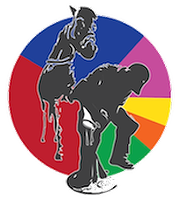How Many Horses, Ponies, Mules, Burros And Donkeys Are In The United States?
In 2012, the U.S. Census Bureau placed the number of these animals living on farms at 3,913,938. This represented a decrease from 4,028,827 animals reported by the U.S. Census Bureau in 2007.
The 2012 figures include 3,621,348 horses and ponies living on 504,795 farms, or an average of 7.2 horses per location.
There were 292,590 mules, burros and donkeys living on 98,379 farms in 2012, an average of 3 animals per farm.
The Census Bureau definition of a farm is a place that sells $1,000 of agricultural products annually.
—Changes in the U.S. Equine Industry Report, 1998-2015, U.S. Department of Agriculture
When Radiographs Are Needed
When radiographs are absolutely necessary with a problem horse and a client refuses to contact a veterinarian to shoot the X-rays, here’s what farriers do:
- 35% of farriers insist that a veterinarian be brought out for an examination or they will refuse to work on the horse.
- 57% of farriers try to make the horse as comfortable as possible.
- 8% figure out another way to do with the concerns.
— 2016 International Hoof-Care Summit survey
Friday's Farrier Facts & Figures is brought to you by Markel Insurance. 
Markel Corporation (NYSE – MKL) is a holding company for insurance, reinsurance, and investment operations around the world. Headquartered in Richmond, Virginia and founded in 1930, Markel reports its ongoing underwriting operations in three segments, and products originate from four insurance divisions and one reinsurance division. Markel Ventures, a subsidiary that makes strategic investments in companies outside of the insurance marketplace, is another important component of our business.
In each of our businesses, we seek to deliver innovative products and responsive customer service so that we can be a market leader. Our time horizon is long-term, our underwriting approach is disciplined, and our focus is on continuously improving the quality of the customer experience. Our financial goals are to earn consistent underwriting and operating profits and to combine those profits with superior investment returns to build shareholder value.








Post a comment
Report Abusive Comment